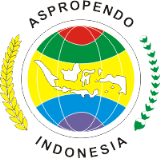FOOD AND NUTRITION AWARENESS SYSTEMS IN THE CITY OF SURAKARTA
Abstract
Surakarta City is one of the cities in Central Java which is vulnerable to food insecurity events, especially transient food insecurity. This is because the city of Surakarta is a disaster-prone area from flooding, strong winds and landslides. This will have an impact on nutrition and food access for the people of Surakarta City when a disaster occurs. The role of the SKPG is very important in providing information for the Surakarta City government regarding the condition of food and nutrition, so that the response to food insecurity can be right on target. The SKPG is compiled by collecting data according to categories, which are then processed for policy making from the Surakarta City government. The quality of public food consumption in Surakarta City, Central Java is still far from ideal. This is indicated by the score of the Expected Food Pattern (PPH) which was still in the range of 80.8% in 2016 which was even lower than 2014 which reached 90.3%. However, in 2019 PPH for Surakarta City was 94%, higher than the national target (92%) based on SKPG annual report of Surakarta City 2019. Apart from the low level of public awareness, the economic condition of the residents can also be the cause of this low quality of food. The decreasing purchasing power of the people is directly proportional to their ability to meet the nutritional standards of the food they consume. The problem of low quality food consumption does not only occur in Central Java, but also nationally. The facts show that Indonesia is ranked the country with the worst food nutrition in the world. This is indicated by the still high number of children under five with weight and height not according to age, which is in the range of 37%, obesity is 12%, and thinness of 11%, this has the potential to lead to greater stunting cases. The occurrence of food and nutrition insecurity is generally caused by not meeting the amount of agricultural production to meet food needs in the region. SKPG is implemented as a measure to anticipate and overcome food insecurity in Surakarta. SKPG should be able to become a guideline so that even distribution and improvement of food security can be done. Based on the explanation of these problems, it is necessary to develop a Food and Nutrition Precautions System in Surakarta City.
Key words: Food, Nutrition, SKPG, Surakarta, Vigilance
Full Text:
PDFReferences
Argandi, S., Trimo, L., & Noor, T. I. (2019). Faktor–faktor yang mempengaruhi pola pangan harapan (PPH) di Kabupaten Bandung. Agroinfo Galuh, 6, 132. https://doi.org/10.25157/jimag.v6i1.1506
BPS. (2019). Kota Surakarta dalam angka 2019.
Cetin, I., Berti, C., & Calabrese, S. (2009). Role of micronutrients in the periconceptional period. Hum. Reprod. Update, 16, 80–95. https://doi.org/10.1093/humup d/dmp025
Hardinsyah, H. (2007). Review faktor determinan keragaman konsumsi pangan. J. Gizi dan Pangan 2, 55. https://doi.org/10.25182/jgp.20 07.2.2.55-74
Kementan. (2012). Undang-uundang Republik Indonesia nomor 18 tahun 2012 tentang pangan. Kementerian Pertanian Republik Indonesia, Jakarta.
Mulya, Z. A., Abdi Nusara, A., Vidya Anggraini, C., Wandhira Wimarnaya, V., Fadhila, N., & Yudhistira, B. (2019). Prospek pengembangan es gabus buah dan sayur, cita rasa jadul kaya vitamin. J. Kewirausahaan dan Bisnis 24, 12. https://doi.org/10.20961/jkb.v2 4i13.30646
Nurhartadi, E., Anandito, R.B., & Yudhistira, B. (2018). IbM tahu bakso “asuh” di Kecamatan Boyolali Kabupaten Boyolali. J. Kewirausahaan dan Bisnis 21, 11– 21. https://doi.org/10.20961/jkb.v2 1i11.20834
Puspitasari, D.I., & Rahmani, A. (2018). Gambaran kebiasaan sarapan dan status gizi mahasiswa gizi dan non-gizi Universitas Muhammadiyah Surakarta. MPPKI (Media Publ. Promosi Kesehat. Indones. Indones. J. Heal. Promot. 1, 46–51. https://doi.org/10.31934/mppki .v1i2.161
Rahmawati, T. (2017). Hubungan asupan zat gizi dengan status gizi mahasiswa gizi semester 3 Stikes Pku Muhammadiyah Surakarta. Profesi (Profesional Islam). Media Publ. Penelit. 14, 49. https://doi.org/10.26576/profesi .148
Rokhmah, F., Muniroh, L., & Nindya, T.S. (2016). Dengan status gizi siswi SMA di Pondok Pesantren Al-Izzah Kota Batu. Media Gizi Indones. 11, 94–100.
Sebataraja, L.R., Oenzil, F., & Asterina, A. (2014). Hubungan status gizi dengan status sosial ekonomi keluarga murid sekolah dasar di daerah pusat dan pinggiran Kota Padang Lisbet Rimelfhi Sebataraja. J. Kesehat. Andalas 3, 182 187. https://doi.org/10.25077/jka.v3i 2.81
Suryana, S., Roudza, R., & Alfridsyah, A. (2018). Konsumsi pangan dan skor pola pangan harapan (PPH) dengan prevalensi stunting di Provinsi Aceh (Data susenas dan PSG tahun 2016). AcTion Aceh Nutr. J. 3, 149. https://doi.org/10.30867/action. v3i2.116
Widodo, Y., Sandjaja, & Ernawati, F. (2017). Score of desirable dietary pattern and association with nutritional status of 0.5-12-year old Indonesian children. Penelit. Gizi dan Makanan 40, 63–75.
Yongky, Y., Hardinsyah, H., Gulardi, G., & Marhamah, M. (2009). Status gizi awal kehamilan dan pertambahan berat badan ibu hamil kaitannya dengan Bblr. J. Gizi dan Pangan 4, 8. https://doi.org/10.25182/jgp.20 09.4.1.8-12
Yudhistira, B., & Eristanto, D. (2019). Karakteristik kimia, fisik dan sensoris keripik simulasi berbahan dasar ikan bandeng (Chanos Chanos) dan tepung kacang merah (Phaseolus vulgaris L.) Sebagai Makanan Ringan Sumber Protein. J. Teknol. dan Ind. Pertan. Indones. 11, 46–52.
Refbacks
- There are currently no refbacks.













